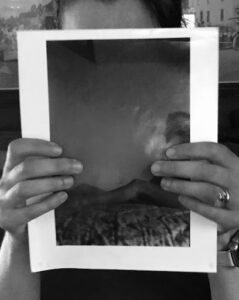By Allison Ford
My first brush with academia in over 20 years found me seated in Curatorial practices. We began this week with “what is a curator” and an introduction to the Museum of Broken Relationships. We learned that often a curator is considered a specialist who cares for something, a person who fills in the blanks of any given collection, rounding out stories told through objects, historically giving weight to items over people, places, or even the institutions that house them. Curators present these collections to the public, seeking to tell effective stories by knowing their audience. A video from The Art Assignment’s Sarah Urist Green helped to define this role for us in both formal and informal settings, from major institutions to individual collections. But that is not all.
We discussed this curatorial ideology in comparison to “relational curating,” a practice that centers relationships over objects as described by Janet Marstine and Oscar Ho Hing Kay. This method of focusing on ‘people and people’ or ‘people and relationships’ helps to overcome the historic bias in curation and seeks to address inequality, societal concerns, and exclusions. Curation by its very nature is discriminatory, a choice between one and another; a notion that requires the curator’s personal acknowledgment and self-reflection. Traditional models of curation and collection see the curator as the primary authority. They may not have the power to determine the questions leading to any given collection but the depth and breadth of the collection is at their discretion. Relational or crowd-sourced curation sees the authority shift to the collective as opposed to an individual. Addressing topics as fundamental as relationships allows for productive conflict, creating space for tension and disagreement.
The primary modality for our relational curating this semester is the Museum of Broken Relationships. The Museum was founded when a couple’s mutual split found the nexus of their parting in a small object. “But who will take the bunny” led co-founders Olinka Vištica and Dražen Grubišić to the formation of an institution committed to shouldering the items that remain after a relationship dissolves. Our primary assignment is facilitating an Indianapolis exhibition in conjunction with the museum. The class discussed an overview of our goals, from defining satellite locations across the city to acquiring items for each collection. We also learned of the project’s scope within the university and the multitude of disciplines present, including art history, museum studies, and visual art.
While the prospect of working with an international museum across multiple disciplines is an exhilarating notion, nothing set the tone more than the participatory class exercise. We were asked to explore our own relationships through the following questions:
Have you ever had your heart broken?
What was the nature of the relationship?
Was it ever good?
What happened when it broke?
What came after it fell apart?
How do you feel about it today?
Would you be willing to donate your items to the Museum of Broken Relationships?
I knew mine right away. If you had asked me at the beginning of class it would not have come to mind. Perhaps it was the way Professor Holzman posed the questions (eyes closed please), but I saw those moments so clearly, the answers so easily identified. After our discussion, where classmates discussed their objects, I was struck by the depth and breadth of items and their stories and my incorrect assumption that the majority of items would be rooted in romance.

Figure 1: This photograph is the object I identified in the class exercise related to broken hearts. I thought there was a stack of many but I could only find the one, the one that came to mind.
The first day of class expanded my notion of curator, introduced conceptual nuance related to individual and institutional collection, and placed me as a cog in an international museum machine. I look forward to day 2.
Allison Ford is an established Indianapolis artist and a first year graduate student at The Herron School of Art and Design.

